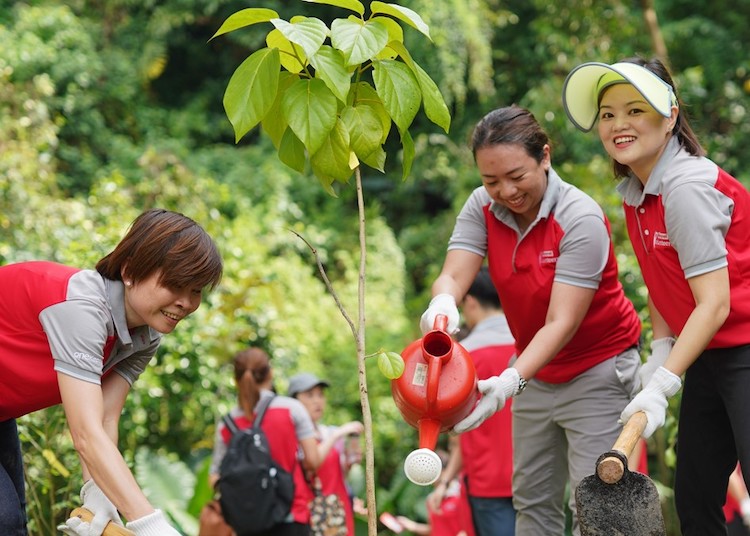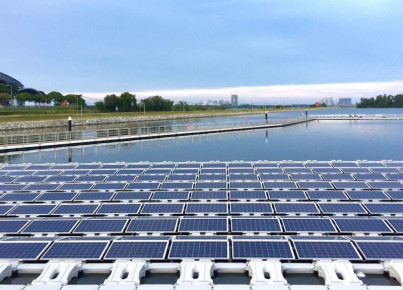The city-state aims to bring nature back to the city by planting more than a million trees
As a city-state with limited land resources, Singapore has long been torn between urban development and nature conservation by losing much of its green spaces in the 19th century to deforestation, and a century later, a growing population and rapid urban development meant that other trees were removed for land reclamation.
But now Singapore is trying to reverse course by organizing an ambitious reforestation campaign. In fact, in August 2020, the government announced the launch of the new Sungei Buloh Park Network, a 990-acre park in the northern part of the island that is a refueling site and an essential stop for migratory birds coming from Siberian Russia and going to Australia and home to eastern hornbills, otters, saltwater crocodiles, and many other unique species. However, Sungei Buloh is part of a larger project that aims to plant 1 million trees over the next 10 years, “The One Million Trees Movement” launched in March 2020 by the government agency National Parks Board (NParks).
Over the next 10 years, NParks plans to conserve more than 70 native animal and plant species and to redevelop 30 hectares of forest, marine and coastal habitats. The multi-level seeding will be carried out along the city streets, called Nature Ways with the aim of covering about 300km and transforming almost every street in the city into a long-term Nature Way by making the roads fresher and more aesthetically pleasing. 500km of park connectors will also be available by 2030, effectively putting all families within a 10-minute walk from a park.
To move from a “city in a garden” to a “city in nature” Singapore will need to implement four key thrusts: more natural parks, transformation of the wild environment into public gardens, integration of nature into the building environment and making green spaces more accessible. In fact, by 2030, there will be another 200 hectares of natural parks, which will serve as complementary habitats and protect nature reserves from urbanization. For example, only for the Khatib Bongsu Nature Park an area of 40 hectares is planned. Waterways and water bodies in gardens and parks will also be protected from rising sea levels and floods.
“Trees play an important role in creating a livable environment”, said Adrian Loo, director of NParks Conservation Group. “They act as natural air filters, reflect radiant heat making the surfaces cold and provide the ambient temperature through the shadow and evapotranspiration; help mitigate the so-called urban heat island effect and climate change”. In fact, making the city greener will also help mitigate the aforementioned “heat island” effect created by the pavement and skyscrapers, which absorb and radiate solar radiation and increase the temperature of Singapore’s urban core.
Adrian Loo said, however, that for the One Million Trees project to be effective, everyone must be involved: “The success of the project is also measured by our ability to instill a sense of respect among Singaporeans, towards trees and the environment”. The government agency Clean and Green Singapore (CGS) aims to inspire city dwellers to care for and protect common spaces and the environment, adopting a clean and sustainable lifestyle.
However, Singapore is not the only ASEAN country to carry out projects of this type: environmental education is in fact an important pillar in the cooperation of member countries. An example of this is the ASEAN Eco-school program, which aims to create a school culture oriented towards the protection and conservation of the environment through the management, commitment and cleanliness of the territory. These activities are dedicated to education, facilitating and inspiring school communities to protect and support the environment, both in schools and at home, but also in the community and within the state in general. Currently, several ASEAN member states have already adopted the eco-school program including Cambodia, Indonesia, Malaysia, Philippines and Thailand.
To date, ASEAN countries face an enormous challenge in maintaining a delicate balance between environmental sustainability and economic development as despite the abundance of natural resources, rapid population growth and even faster economic and industrial growth risk threatening natural resources causing serious environmental problems. However, ASEAN has recognized the need for a major change of direction towards a greater balance between people, planet earth and profit for proper sustainable development.
This transformation will require a change in the way of thinking and acting of the new generations of Southeast Asia who must be educated to safeguard green spaces and give weight to sustainability and the environment, also exploiting the opportunities of digital transformation.






